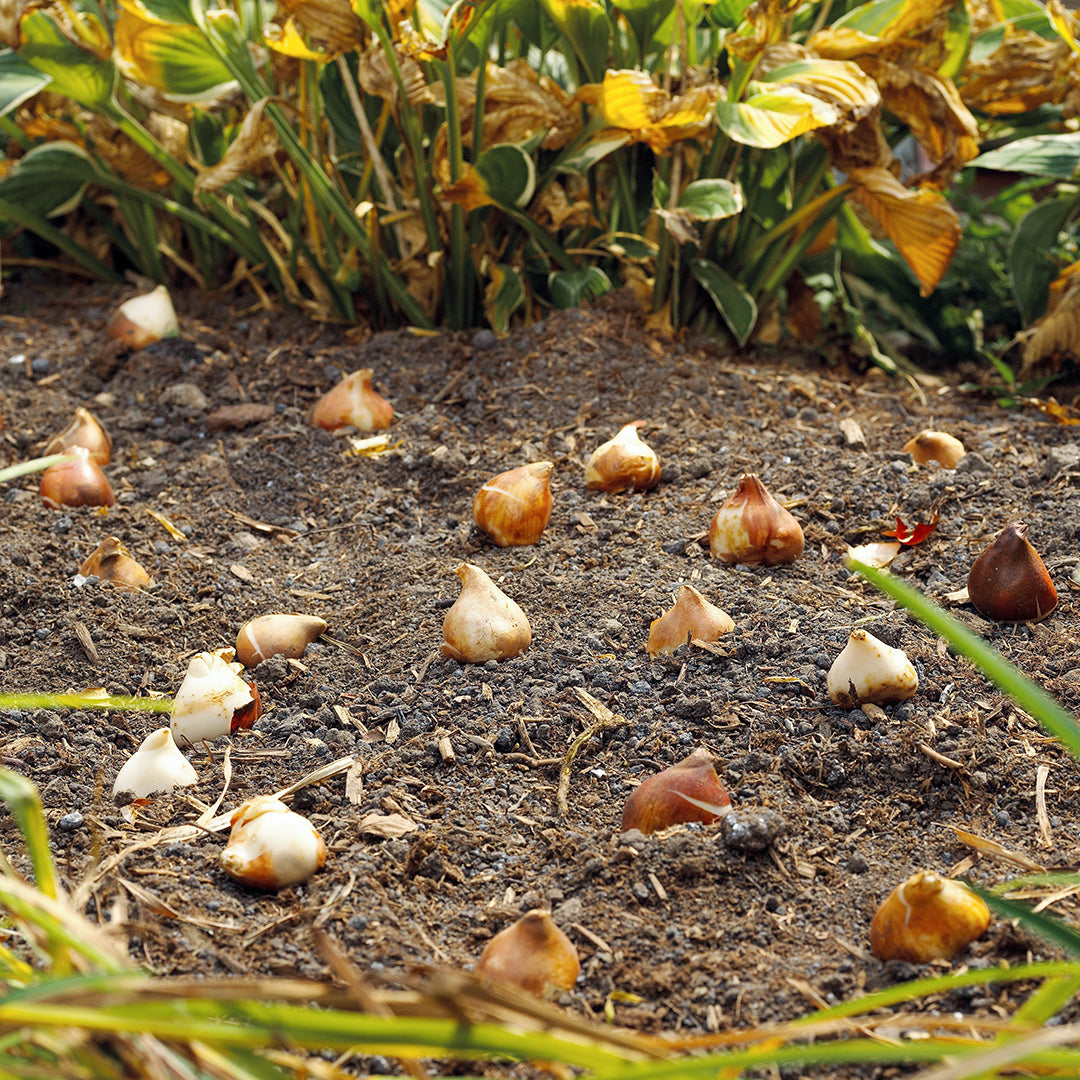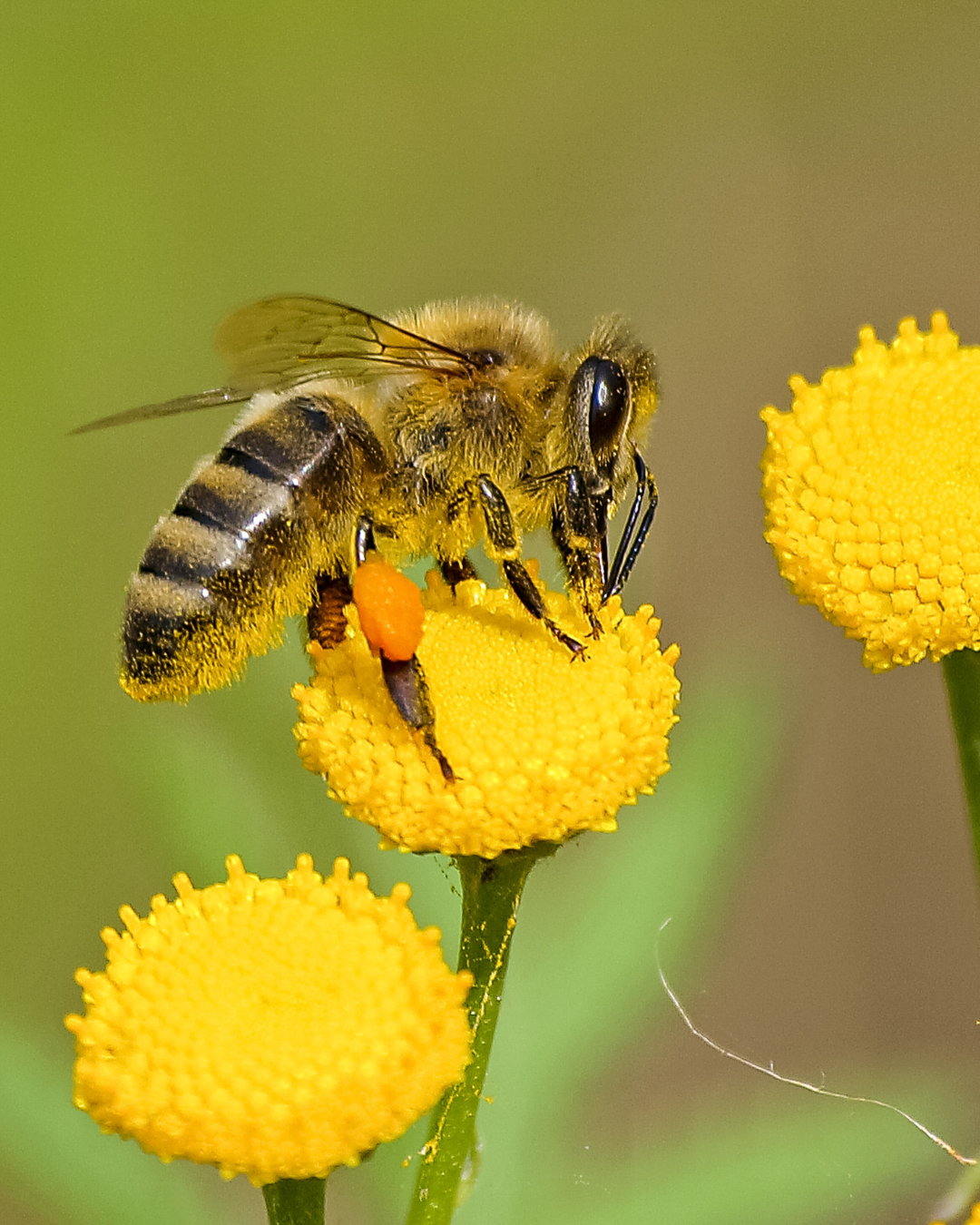
No one regrets planting bulbs in the fall . When our 'colour starved' selves are searching for signs of life after winter, spring flowering bulbs provide that dose of happiness and bring life to our not yet awakened gardens.
Here are our TOP TIPS for planting fall bulbs at this time of year. And with our extended warm temperatures, you still have time to get them tucked away before the ground freezes.
- Plant in a location with good drainage . Bulbs will not survive if planted in a site where water pools / ponds, as bulbs do not like 'wet feet'.
- Plant when soil temps have dropped below 10 degrees C but before a hard frost.
- Plant in a full sun location. And since spring flowering bulbs flower when the trees have not fully leafed out, you are really not restricted to plant only in sunny locations in the garden, spring flowering bulbs are the first colour to show in shade gardens too.
- Plant plump and hard bulbs. They will get off to the best start. Bulbs that have soft spots may indicate trouble with post harvest handling / storage and may not establish successfully.
- Plant bulbs at a minimum depth of twice the diameter of the bulb. A 3 inch diameter tulip should be planted at least 6 inches deep, whereas a 1.5 inch daffodil bulb can be planted at 3 inches deep.
- Plant bulbs close together, large bulbs at most 3 inches apart, and small bulbs such as crocus plant at 1-2 inches apart . You will achieve a better colour effect in the spring when planting close together like this. The most efficient way of planting is to dig a trench and set the bulbs in , pointed end up, as opposed to planting bulbs in individual holes. It is also the best way to plant bulbs in layers, see the next point to discover the layering of bulbs method.
- Try layering your bulbs when planting. It will provide a mixed planting that looks far more natural. When digging your trench plant the deeper tulip bulbs first, add a layer of soil and then plant more shallow crocus or narcissus on top of them. This double decker approach is beautiful, especially when planting bulbs that flower at the same time. Imagine hot pink early blooming tulips blooming above cobalt blue grape hyacinths!!
- Keep your planting areas tidy. Do not discard the papery shells (husks) of bulbs on the ground; that is a sign to squirrels that you have planted something yummy.
- If squirrels are a big issue, consider planting more daffodils or daffodils/narcissus in combination with your tulips and crocus. Narcissus are poisonous to squirrels.
- Plastic snakes in the garden are a deterrent to pesky squirrels and chipmunks
- Chicken wire over top of planted tulip bulbs are a good deterrent to squirrels as well. The tulips will grow up through the chicken wire and it act as a physical barrier to marauding squirrels.
- Another strategy to outwit the squirrels is to smooth the soil after planting, as they look for disturbed earth to secure their bounty. Even rake leaves over the spot that you planted to continue to disguise the site.
So with the extended warmer temperatures we are experiencing this October, you still have safely at least 2 weeks to get your spring flowering bulbs planted. Stop by the greenhouse and chat with us on some of your favourite bulb planting strategies.


